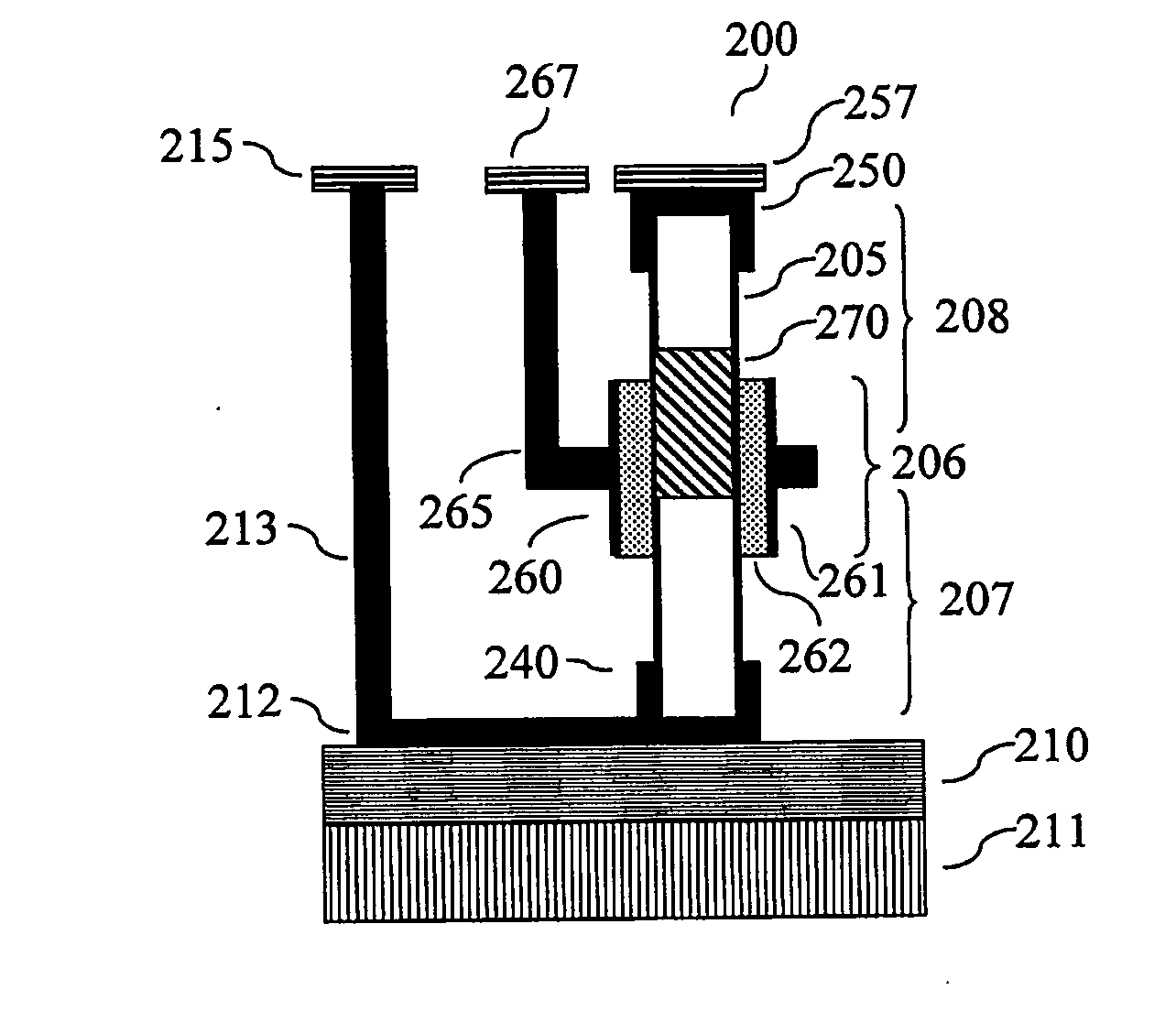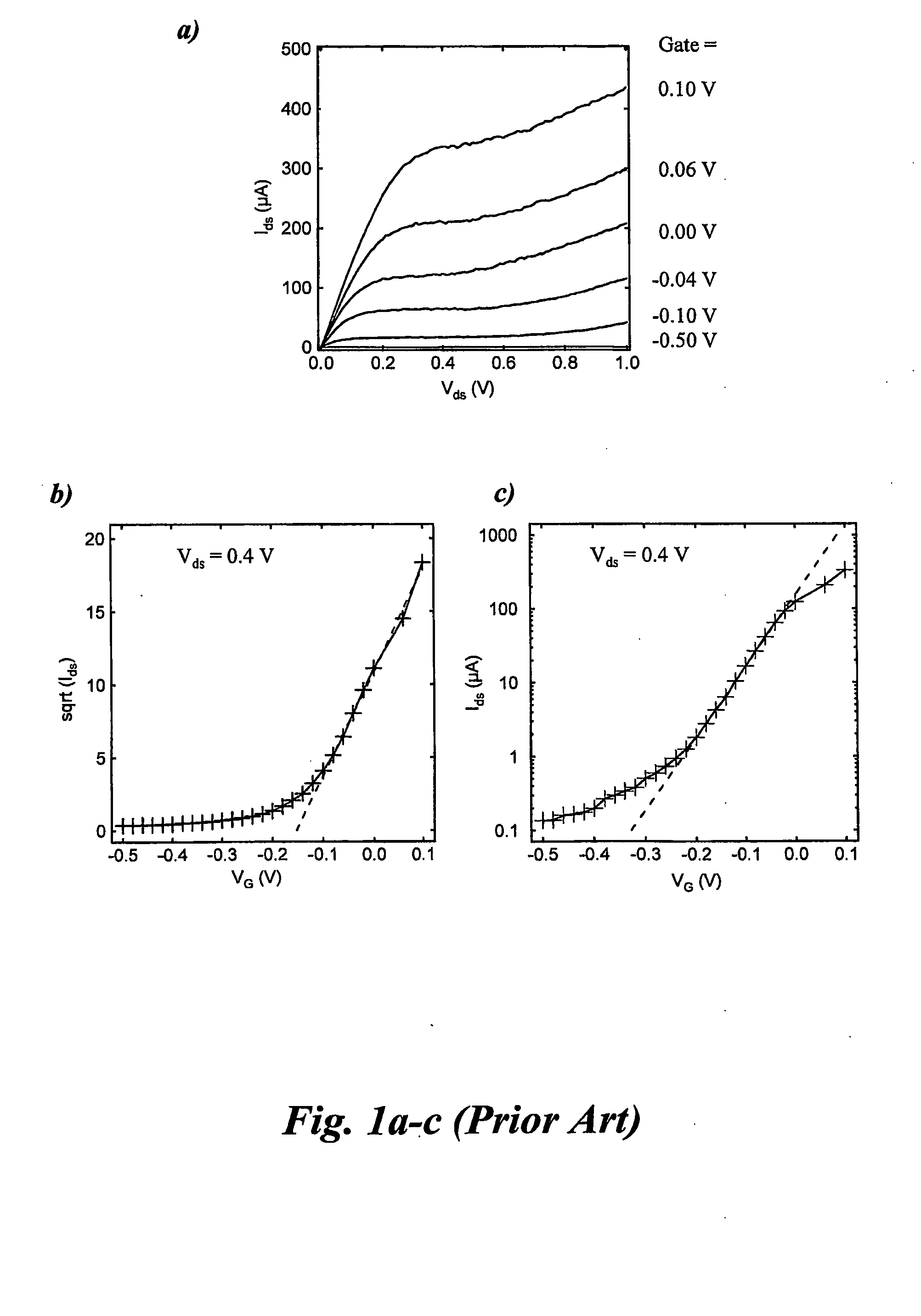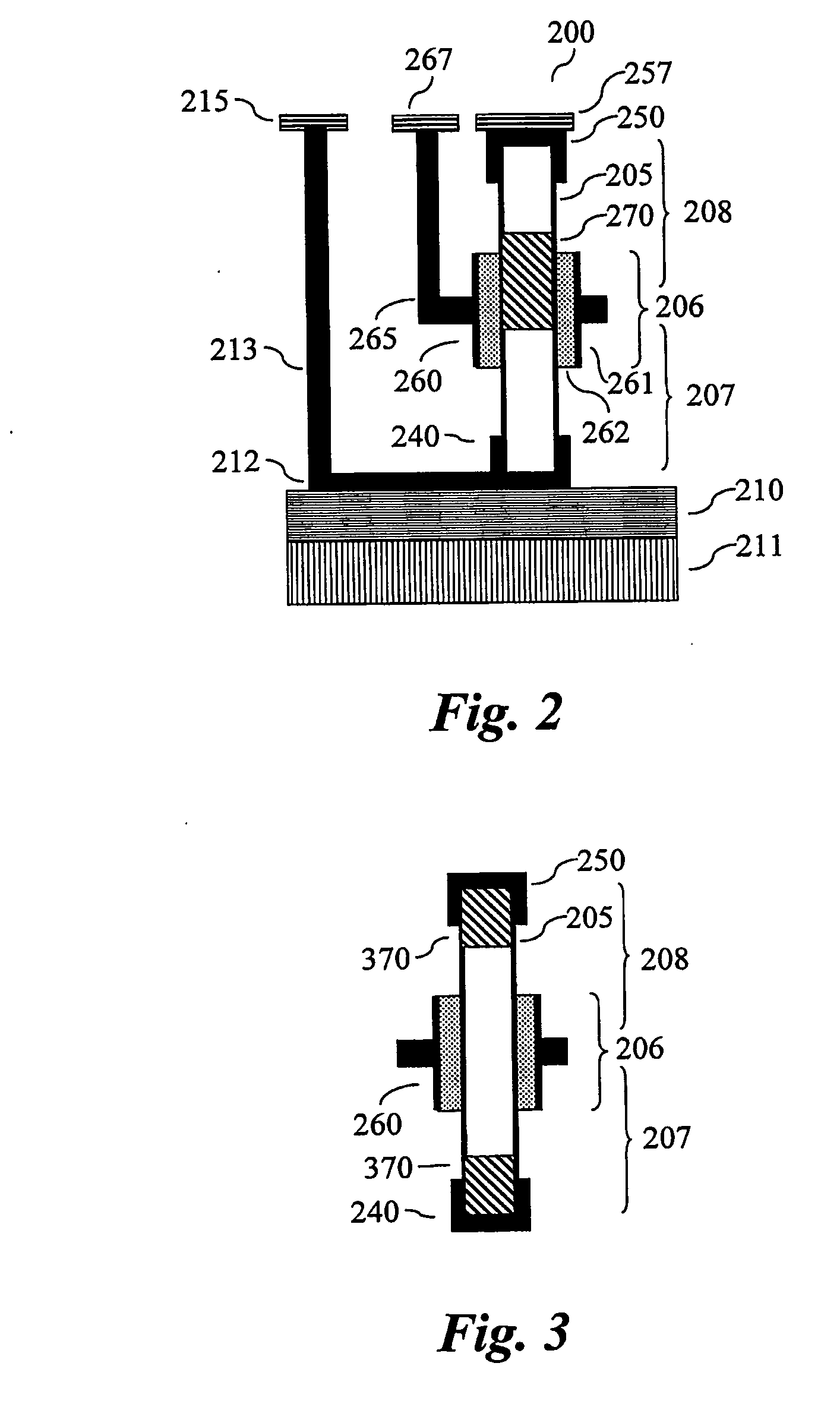Semiconductor Nanowire Transistor
a technology of semiconductor nanowires and transistors, applied in transistors, nanotechnology, electric devices, etc., can solve the problems of weak thermal effects, small current on/off ratio, poor current control of transistors made of these materials, etc., and achieve the effects of reducing the impact ionization rate, improving the performance of the fet, and reducing the output conductan
- Summary
- Abstract
- Description
- Claims
- Application Information
AI Technical Summary
Benefits of technology
Problems solved by technology
Method used
Image
Examples
first embodiment
[0039]According to the invention one heterostructure 370 is provided in connection with either the drain 250 or source contact 240, or alternatively two heterostructures 370 are provided, one in connection with the drain contact 250, and one with the source contact 240, as illustrated in FIG. 3. The heterostructure(s) 370 consists of a segment of a semiconductor material of different constitution than the adjacent part or parts of the nanowire 205. The material of the heterostructure segment(s) 370 has a narrower band gap than the nanowire (like InAs, InSb, InGaAs or Ge, or alloys containing Al, Ga, In, As, P). Suitable band gap for the segment range from 200 to 500 MeV and segment lengths from 50 to 300 nm. Suitable materials include, but is not limited to InAs, InSb and Ge and combinations and alloys thereof The heterojunction can either be abrupt or graded. The narrow band gap reduces the specific contact resistance to the transistor and improves the performance. These segments a...
second embodiment
[0040]According to the invention a heterostructure 470 is provided in the high-field region between the gate and the drain, i.e. the gate-drain portion 208, and extends in the direction of the drain outside of the gate contact 260, as illustrated in FIG. 4. The heterostructure comprises a segment (length 50 to 500 nm) of a semiconductor material with wider band gap (ΔEg 100 meV to 2 eV) than the nanowire (like Si, SiGe, InP, GaAs, GaP, or alloys containing Al, Ga, In, As, P). Suitable materials include, but is not limited to InP, GaAs and AlAs and combinations and alloys thereof. The increased band gap reduces the impact ionization rate due to an increased band gap and / or a reduced electric field. The heterostructure may be either graded or abrupt.
third embodiment
[0041]According to the invention a heterostructure 570 is provided within the gate region 209, i.e. within the part of the nanowire enclosed by the wrap gate contact 260, as illustrated in FIG. 5. The heterostructure consists of a segment of a semiconductor material with wider band gap (ΔEc 100 to 300 meV) than the nanowire (like Si, SiGe, InP, GaAs, GaP, or alloys containing Al, Ga, In, As, P). Suitable materials for the segment include, but is not limited to InP, GaAs and AlAs and combinations and alloys thereof. The increased band gap enhances the maximum barrier height (˜Eg) that may be utilized for blocking the thermal current in the off-state of the transistor and increased the current on / off ratio. The heterojunction is sufficiently thick (>5 nm) to allow for diffusive-like transport (field assisted tunneling) across the interface. The heterojunction can either be abrupt or graded. The on-current still remains high due to tunneling and thermionic emission across the heterostr...
PUM
 Login to View More
Login to View More Abstract
Description
Claims
Application Information
 Login to View More
Login to View More - R&D
- Intellectual Property
- Life Sciences
- Materials
- Tech Scout
- Unparalleled Data Quality
- Higher Quality Content
- 60% Fewer Hallucinations
Browse by: Latest US Patents, China's latest patents, Technical Efficacy Thesaurus, Application Domain, Technology Topic, Popular Technical Reports.
© 2025 PatSnap. All rights reserved.Legal|Privacy policy|Modern Slavery Act Transparency Statement|Sitemap|About US| Contact US: help@patsnap.com



